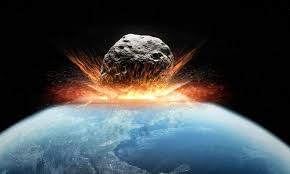Before you begin panicking, this is not a major news headline you need to worry about. No asteroid is on a collision course with Earth for the nearby future… at least, not that we know of… That is a very morbid yet true fact: planet-killing asteroids are not always going to be detectable. Rest easy knowing that organizations such as the National Aeronautics and Atmospheric Administration (NASA) are constantly monitoring the skies. Also, the threat of dying from just about anything else is astronomically higher. Heh, space puns. This blog serves as a list of some of the near-Earth objects (NEOs) that NASA’s Center for Near Earth Object Studies (CNEOS) is monitoring closely. First though, what is a NEO?
What exactly is a NEO?
When I say near-Earth object, the first thought that might come to mind is the Moon. 
Bennu
You probably have heard about this asteroid if you have been paying attention to space news recently. NASA just successfully collected samples from it to return to Earth for study. What you might not know is that Bennu is considered a PHA and could impact Earth in the future. In fact, there are 78 potential times that Bennu could impact us. Alarmed? The calculated probability of an impact actually occurring is 1 in 2,700 odds, with a 99.963% chance that Bennu will miss during any of its flybys.
Apophis
Named after the Egyptian God of Chaos, this asteroid earns its nickname, as it is quite a scary character. Of all the PHAs out there, this one is the most alarming. Currently, the probability sits at 0.00089% chance of Earth impact or 1 in 110,000 odds of Earth impact. However, this is only for the first upcoming close encounter in 2029. Doing a little digging will reveal a far graver estimate. See, Apophis has a date with Earth in 2068, and it appears eager to meet with us. The asteroid is speeding up, making the potential impact more likely. NASA is closely monitoring this recent change to make accurate predictions, but rest easy knowing that we have 48 years to figure things out.
Collision Course
Our Fairfax location allows you to play out a hypothetical scenario very similar to the one Apophis poses. 
Written by Zachary “Astro” Hullings

